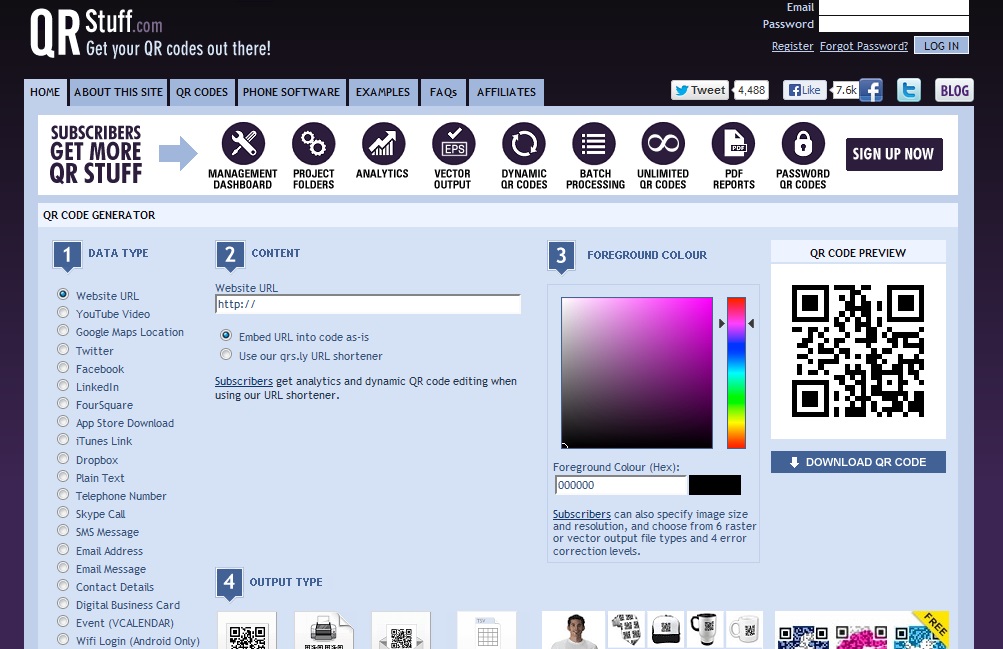Your cart is currently empty!

Attract Customers When They’re AFK
I’ve been working on some municipal projects with WhatIf Creative, a fun marketing firm in Fort Smith. It finally hit me that they don’t use “Ft. Smith” in Fort Smith. It’s probably like saying “Frisco” in San Francisco. Thank goodness for find and replace.
Anyway, WhatIf is a full-service marketing agency, doing print as well as web stuff, so I’ve been writing up things like rack cards and refrigerator magnets. The goal, however, is to get people to the websites.
It makes a lot of sense, when you do IRL marketing, to work on getting people to your website. It may seem as though it’s an extra step — why not just get them into the store? Of course, there’s nothing wrong with doing both, but some people worry about diluting the message with multiple calls to action. The advantages of bringing people to your website outweigh the potential disadvantages, though:
- You can offer way more information. That 6×4 postcard or tri-fold brochure can’t answer all the questions, but your website can.
- You can stay up to date. Reprinting pricey brochures and rack cards when a price changes or you add or drop a service is a pain. Today’s dynamic websites are easy to update, so you can send people to your constantly current website and save a bundle on printing costs.
- You can bring people back. They might use your fridge magnet, but if you get them to your blog you can bring them back repeatedly. They’re more likely to subscribe to your newsletter from your website, too, and opt-in advertising has a much higher ROI than broadcast.
So how do you get people to your website? There are several options, and which one works best depends entirely on the environment in which your print piece is meeting your customers.
- Are they at home? A QR code or a simple web address will do it. Some of the government sites I’ve been working with have crazy hard to remember URLs. For those, a QR code is your best bet. While consumers who will use QR codes are still in the minority, the number is growing. Make sure they know where the code will take them, and make sure it takes them to right page. The example in the screenshot above goes right to a subscription page, and it’ll show up right next to information about what people get when they subscribe.
- Are they on the go? People walking or driving buy aren’t going to use a QR code. They won’t have time. If you’ve got a sign and folks are passing it, use a memorable URL or even a good site name with a brief message. “Visit Airport.com for up to date arrival times!” is just about perfect. “To find current flight information, explore our website at http://www.fortsmithairport.com/flightinfo.php” is a complete waste of space. “Get the latest info at our website” followed by the name of your company will work for the average internet-savvy passerby.
- Are they waiting? If your audience is trapped in a doctor’s waiting room, a check-in line or a laundromat, QR codes are ideal. Make them a special landing page with plenty to read or a little quiz they can take. Heck, let them throw livestock at people. Bored people play with their phones. This is the situation in which your customer who doesn’t use QR codes will take the time to learn how, so use a paragraph on your brochure to explain it.
The screenshot at the top of this page is from QRStuff, a site where you can make colorful QR codes from web addresses, PayPal “Buy Now” buttons, or phone numbers, if you care to. When you use QR codes, though, remember to give text as well. You need to let people know where they’re going, and you need to provide the web address for the folks who won’t use your code.
Then why have the QR code if you still have to add the address? Last year at about this time, a study of smartphone owners found that 6% had used a QR code. A recent repeat of that study found that nearly half of smartphone users have tried it out, and 18% have actually used a QR code in a transaction. Over half of Americans own smartphones — up from 35% last year. That gives you a lot of people who don’t own smartphones and a lot of smartphone owners who don’t use QR codes.
But it also shows a very brisk adoption rate. Plot those lines out into the future and you’ll see why it’s smart to include QR codes, even while it’s also still smart to use a memorable domain name and keep your company name prominent.
by
Tags:
Comments
2 responses to “Attract Customers When They’re AFK”
-
I had to look up the abbreviations:
AFK = away from keyboard
IRL = in real life
Feeling dumb that I didn’t know these acronyms already.
Just realized that “QR” must stand for something, too, and it does: “quick response”
Just sign me AAS in the AFZ.
-
LOL!

Leave a Reply